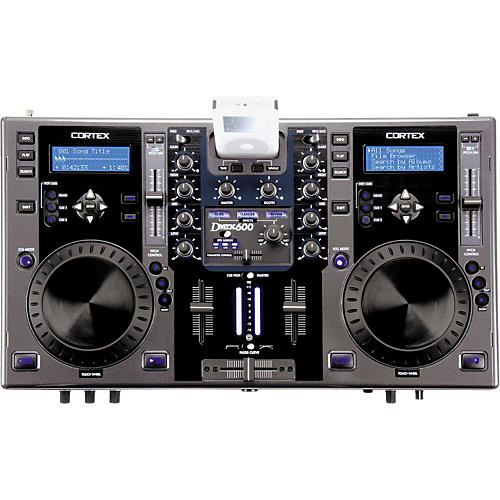Cortex Dmix 600 Software Update
- All textures have mip-map levels. - All models are adapted to the Dynamic Lighting Script from DimZet13. Download spiderman mod for gta 3. - Updated game effects (Particle system). - Elements of the interface are stylized for GTA4 and are taken from DK22Pac. - There is an ENB Series configuration (Thanks to Boris Vorontsov!) - Installed HD-Cars and HD-Weapons from OnePiece.
Can help i have a cortex dmix controller and want to update its firmware but when. Do you know if the DMIX-600 shares the same software? May 10, 2018 - The beauty of easy firmware updates is that Cortex has been working on fixes for these problems and should have a firmware. Cortex has such.
In the meantime, laptop performance has fought its way to respectability in the DJ world, but DJing from an iPod (and other hard-drive devices) still has some work ahead of it to be taken seriously. More than a year ago, after an initial wave of iPod mixing products were largely written off as toys, a new breed will hatch this year to take iPod DJing into the realm of legitimacy. A key component to those pieces, including the new Cortex dMIX-300, is the streaming technology necessary to play two songs at once from a single iPod, change the pitch of those songs and digitally scratch them — all traits the earlier iPod mixers didn't share. DECK, DOCK, DECK There's no mystery to the dMIX-300's all-in-one physical layout.

A full 2-channel mixer centers the unit, with two identical deck sections on each side for controlling music playback. A built-in iPod dock accommodates any iPod model with a dock connector — iPod 3G and later, iPod Mini and iPod Nano — and adapter plates for the Mini and Nano models are included. A single USB 2 Type-A port on the back panel labeled MSD (mass storage device) connects USB drives; you can also connect a powered USB hub to hook up a maximum of four USB storage devices at a time feeding into that one port. As a bridge to the physical world, the dMIX-300 has two stereo audio inputs on unbalanced RCA connectors on its back panel. You can switch the inputs from phono to line-level to hook up a total of two turntables (grounding included) and/or CD players. At the top of each mixer channel strip is a switch to select either the MSD USB port or the analog input as the source for that channel.
The mixer also has a gain knob, 3-band EQ (with center detents), a 60 mm volume fader and blue-lit volume meter for each channel. A removable crossfader features a 2-curve switch to change from a smooth fade for blending or a quick-cut curve for scratching. Two separate ¼-inch TS mic inputs — one on the front and one on the back panel — can be active simultaneously for dynamic mics or other mics that don't need phantom power. Both mic inputs share a mic volume knob and low- and high-EQ knobs on the front panel. The mic signals flow equally to each of the three stereo outputs on the back: master, booth and record, which all exist on a pair of unbalanced RCA connectors.
Both the master and booth outputs have corresponding level attenuators in the mixer, while the record output has no volume control but is set to a consistent -10 dB level. Finally, there is a headphone cue section in front with a ¼-inch stereo phones jack, volume control and a cue fader that blends the headphone mix between Cue 1 (left channel) and Cue 2 (right channel). Each channel deck includes a 20-by-4-character, blue backlit LCD with contrast control located inside the menus. Info, Play and Search buttons, as well as a set of arrow keys, help to navigate song databases, search for tracks and play them. Pitch-control “±” buttons and a slider can be turned to alter pitch at a selectable range of ±4, 8, 16 or 24 percent. A Jog Mode button accompanies each jog wheel to determine whether they perform scratching or a forward/backward nudging to assist beat matching. The wheels can also scroll through menu options instead of the arrow buttons in the interest of speed.